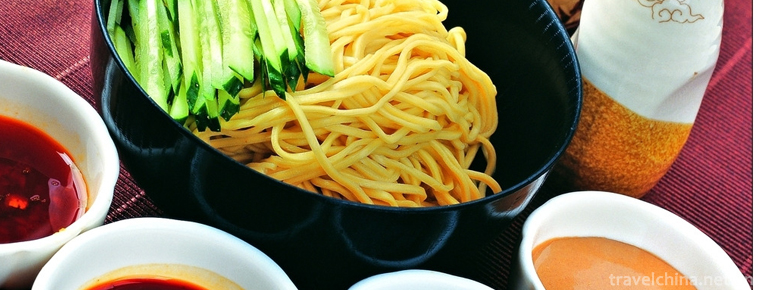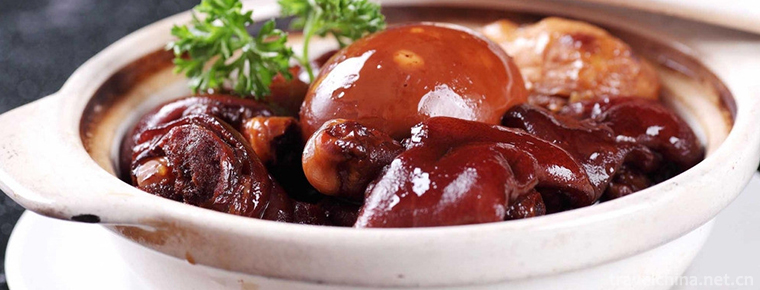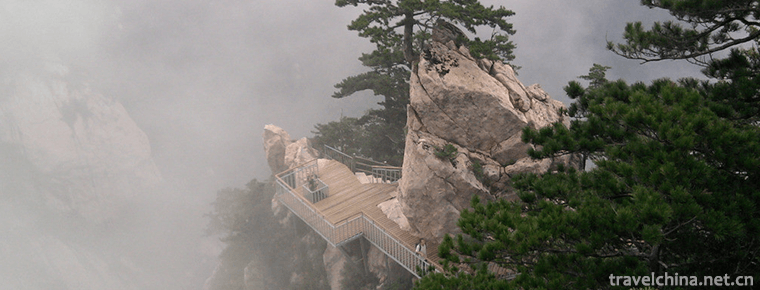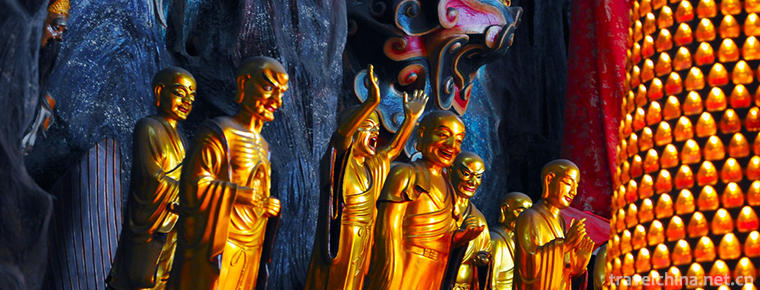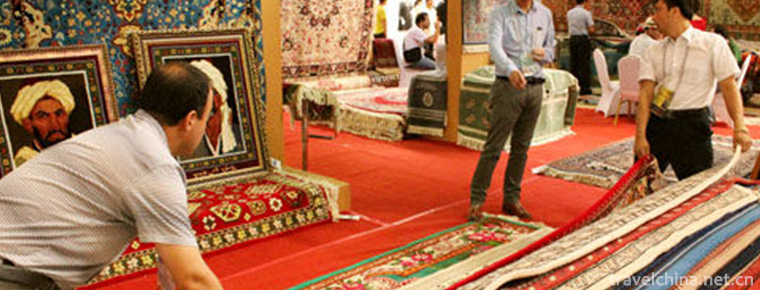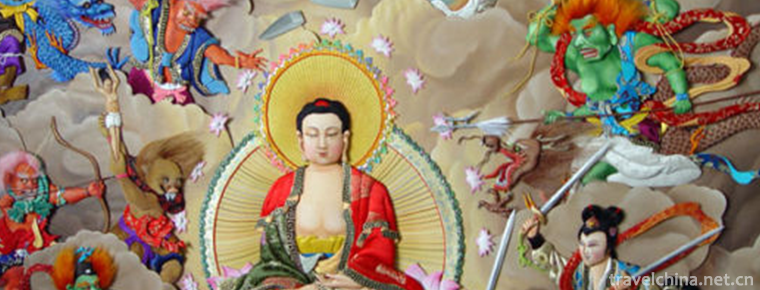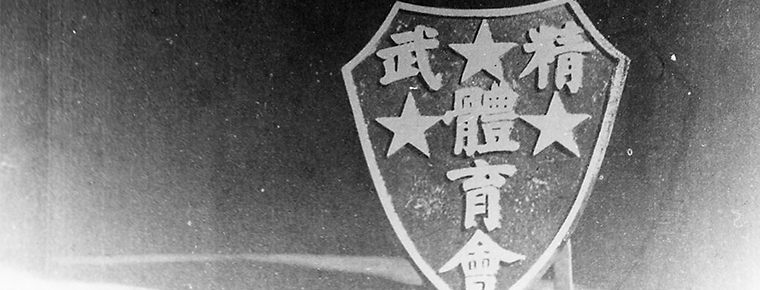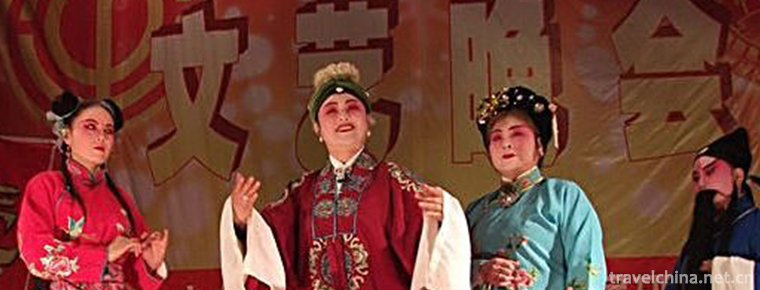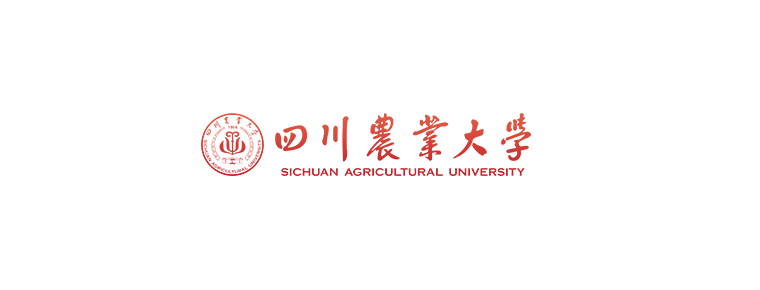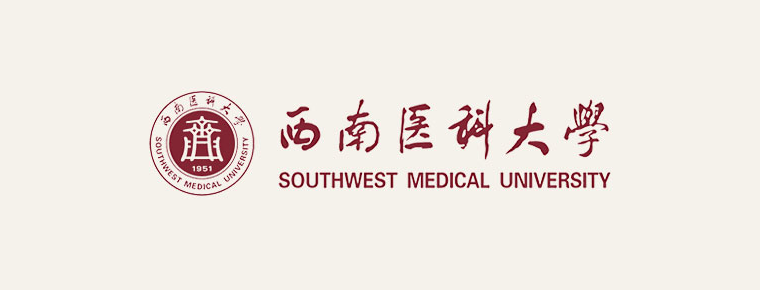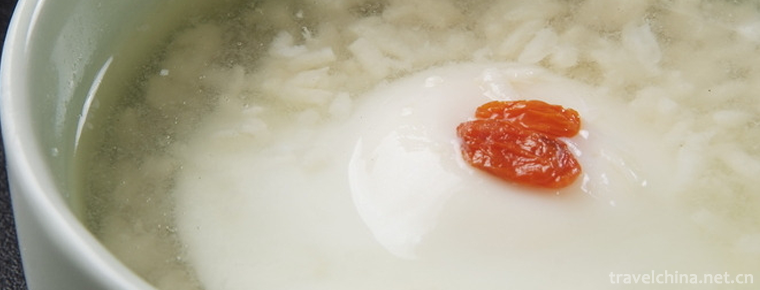China Antique Car Museum
Located on the Houli Cultural Site, the Chinese Ancient Car Museum is the first most systematic and complete Museum in contemporary China, which integrates the Car and Horse Sites with the display of cultural relics. The museum's contents focus on the achievements of research on ancient Chinese cars, fully demonstrating the long history of Chinese cars and the leading position of car-making technology in the world's vehicle development history.
The Museum consists of the exhibition hall of horse-and-carriage martyrs in the Spring and Autumn Period and the exhibition hall of ancient Chinese carriages. The exhibition hall of horse-and-carriage martyrs in the late Li Spring and Autumn Period is one of the top ten archaeological discoveries in China.
Development history
Linzi China Ancient Car Museum is located in the north of Hou Li Guanzhuang Village, Qiling Town, Linzi District, on the East Bank of Zihe River. In 1990, in order to cooperate with the construction of Jiqing Expressway, Shandong Provincial Department of Cultural Relics and Archaeology unearthed a large-scale horse-and-chariot pit in the Spring and Autumn Period at Houli Cultural Site. Its large scale, complete matching, exquisite horse ornaments and well-preserved are the top ten archaeological discoveries in 1990. On September 9, 1994, it was established as the Museum of Ancient Cars. Cars and horses were the main means of transportation on land in ancient China. Car-making is a comprehensive handicraft sector. Chinese ancient cars have long been in the leading position in the world for their excellent performance. Stirrups, a very important component of riding harness, were first invented in China. In this regard, China has made great contributions to human civilization.
Linzi China Ancient Car Museum is located in Hou Li Guanzhuang, Qiling Town, Linzi District. Located on the site of Hou Li Culture, Linzi is the first ancient car museum in contemporary China, which is the most systematic and complete and integrates the vehicle and horse sites with the display of cultural relics. The museum includes the exhibition hall of horse-and-carriage martyrs in the Spring and Autumn Period and the exhibition hall of ancient Chinese carriages. The exhibition hall of horse-and-carriage martyrs in the late Li Spring and Autumn Period is one of the top ten archaeological discoveries in China.
Linzi Museum of Chinese Ancient Cars was built on the basis of Hou Li Chunqiu's death of horses and chariots, one of the ten archaeological discoveries in 1990. It is divided into two parts: the exhibition hall of ancient cars and the exhibition hall of underground spring and autumn martyrs and horses. The Museum of Ancient Cars was built on September 9, 1994. Its contents focus on the research achievements of Chinese ancient cars and gather the essence of Chinese car rides in past dynasties.
Linzi China Ancient Car Museum is located in Houli Cultural Site, which is the first Chinese Ancient Car Museum with the richest content and the most systematic, and integrates the site of archaeological excavation with the exhibition of cultural relics. The museum's contents focus on the achievements of the research on ancient Chinese cars, fully demonstrating the long history of Chinese cars and the leading position of car-making technology in the world's vehicle development history. The museum is situated 126 kilometers away from Jiqing Expressway, with large parking lots on both sides. The traffic is very convenient. The downstream amusement park of Guche Museum includes folk custom exhibition, folk entertainment, bird language forest, archery field, botanical garden, bonsai garden, racing track and so on.
The pavilion was built in 1991 and completed in September 1994. It covers an area of 20 mu and covers an area of 3600 square meters, including the Spring and Autumn Car and Horse Exhibition Hall and the Chinese Antique Car Exhibition Hall. It takes about an hour to visit the scenic spot.
In the Spring and Autumn Period, there are 10 horse-killing chariots and 32 horses in the pit of horse-killing. They are large in scale, complete in matching and beautifully decorated. They are among the top ten archaeological discoveries in China. All kinds of vehicles unearthed in Li Che Ma Keng and the restored vehicles unearthed in Linzi area after the exhibition hall of ancient cars were displayed, and all kinds of ancient vehicles unearthed in the whole country were restored. Concentrating on the achievements of the research on ancient Chinese cars and the essence of Chinese car ride treasures, it fully demonstrates the long history of China's car ride and the leading position of car-making technology in the world's vehicle development history.
The Museum of Chinese Ancient Cars is divided into two parts: the Exhibition Hall of Chinese Ancient Cars and the Exhibition Hall of Martyred Cars in Spring and Autumn Periods. The exhibition hall of ancient cars is divided into three exhibition halls. In order of the times, the exhibition hall shows the generation, development, technological improvement of cars and the roles played by horses and vehicles in war, transportation, production and life through physical objects, models, restoration of ancient cars, pictures and words. The first exhibition hall, the first car for the Shang Dynasty Quheng car, is based on the data unearthed in Yinxu, Henan Province. It was followed by the Quheng Car, which was driven by two horses in the Western Zhou Dynasty. Spring and Autumn chariots are based on the recovery of Li martyred chariots and horses after Linzi. The second exhibition hall, Qin car is based on Qin Shihuang bronze car and horse imitation. The Han Car is a wooden ox cart created by the aristocrat Anle and Zhuge Liang. Cowcart in Wei, Jin, Southern and Northern Dynasties. The third exhibition hall is a bullock cart for women. The horse-drawn carriage is a high-grade carriage. It is a luxury carriage for the Chinese emperor. It can be divided into five types: jade, gold, leather, wood and elephant. The Liao Dynasty was a big camel car. Ming Dynasty is the emperor traveling like the control of Jin Bi. Vehicles and horses were the main means of transportation on land in ancient China. The stirrups, which were very important components of riding equipment, were first invented in China. In this respect, China has made great contributions to human civilization. Following the track of historical wheels, we entered the underground exhibition hall of horses and chariots killed in spring and autumn. This is also the site of the excavation of horses and chariots. It was discovered during the construction of Jiqing Expressway. After consultation with the cultural and transportation departments, special measures were taken to build the exhibition hall under the expressway. There are large parking lots on both sides, which can be parked and visited. The underground exhibition hall has a span of 15 meters. There are two rows of carriage and horse pits in the north and south. The length of pit No. 1 is 32 meters, and the width is 5 meters. There are 10 cars and 32 horses. The second pit is 8 meters long and 3 meters wide. There are 3 cars and 6 horses. The logs are rotten, but the traces of the car are left in the loess. The copper ornaments on the car are still well preserved in situ. The horse skeleton is well preserved, especially the decorations on the head and neck of the horse, which are particularly exquisite and varied in form.
In May 1990, an archaeological team of Shandong Province, cooperating with the construction of Jiqing Expressway, discovered a large car and horse pit in Hou Li Guan Village, Qiling Town, and excavated it in an all-round way. After excavation, it is found that the pit is divided into Pit 1 and pit 2. The Pit 1 is 32 meters long and 5 meters wide from north to south, with horses and chariots lined east to west, and 10 vehicles and 32 horses were killed. The west end of pit No. 2 is close to pit No. 1. It is 8 meters long and 3 meters wide. There are 3 dead cars and 6 horses. Unlike pit No. 1, the car is buried on two floors. The large number, scale, early age and well-preserved of horse martyrs in the whole Chema pit are rare in China. They have high archaeological and ornamental value and are listed as one of the top ten archaeological discoveries in 1990. In 1993, according to the history of Chema pit, the value of cultural relics and its position in the development of Qi culture, the government of Linzi District decided to protect them in situ, and to study, reproduce and display the different types of horses unearthed from different parts of the country in different periods, so as to build an ancient Museum series of carriages and horses.
On September 9, 1995, the Museum of Ancient Cars, with an area of 13600 square meters and a building area of 3600 square meters, was built and opened by the district government with an investment of 8 million yuan. Premier Tian Jiyun of the State Council and Defense Minister Zhang Aiping inscribed the museum's name.
The Linzi Museum of Chinese Ancient Cars consists of two parts: the Exhibition Hall of Ancient Cars and the Exhibition Hall of Martyred Cars and Horses in Spring and Autumn Period. The exhibition hall is part of the traditional wooden structure dump style. It covers an area of 2300 square meters and is divided into two floors. The ancient cars are displayed in the order of the times. They display the restored models of ancient cars and unearthed copper, pottery cars and horses, as well as the ornaments of copper and bamboo carriages and horses in different periods of the Shang Dynasty, the Western Zhou Dynasty, the Spring and Autumn Period, the Warring States Period, Qin, Han Dynasty, the Northern and Southern Dynasties, Tang, Song, Yuan, Ming and Qing Dynasties. At the same time, the palace carts and horses It systematically reflects the emergence, development, change, technological improvement of ancient Chinese cars and the status and role of horses and chariots in life and war. The exhibition hall of martyrs and horses located underground may be a coincidence of the vicissitudes of history. On the ground, the Jiqing Expressway runs across the East and west, and modern automobiles are speeding up and down. Underground, the ancient carriages and horses lie quietly 2600 years ago. Over thousands of years, the two are integrated, dynamic and static, forming a strong contrast, which makes people realize the unique artistic conception of the wheel of history.
In 2002, the museum raised 800,000 yuan by itself, and built an amusement park of 1500 square meters, which integrates leisure, entertainment, catering, folk exhibition and sports and fitness. It includes 15 groups of participatory entertainment facilities, such as Bird Language Forest, Cock Fighting, Sheep Fighting, Horse Running, Archery and Swing, Ring and Bed Jumping.
Collection
Hou Li Chunqiu died of horses and chariots, divided into Pit 1 and pit 2. The first pit is 32 meters long, 5 meters wide, 10 cars and 32 horses. The second pit is 8 meters long, 3 meters wide, 3 cars and 6 horses. It is listed as one of the top ten archaeological discoveries in 1990.
Visiting information
Ticket information: 40 yuan per person, explanation fee is 40 yuan.
Traffic Information: Take Bus No. 20 or No. 6 from Zhangdian Bus Station of Zibo to Linzi Bus Station, transfer Bus No. 73 to Guche Museum Station
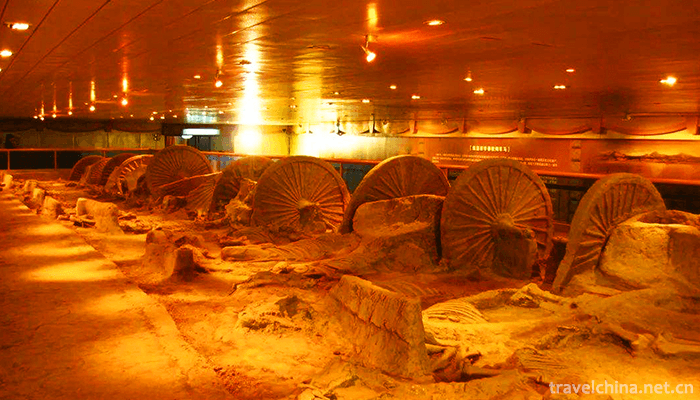
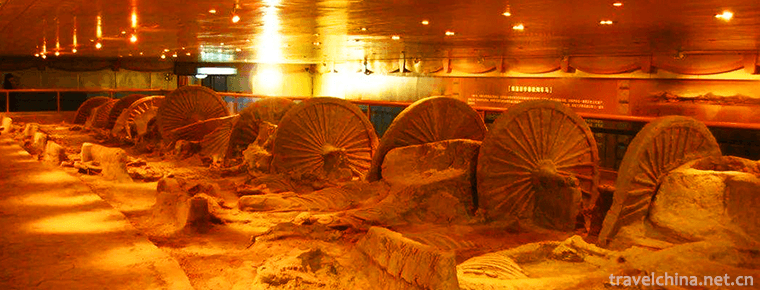
China Antique Car Museum
-
Cold Noodles with Sesame Sauce
Cold Noodles with Sesame Sauce are also called cold noodles
Views: 152 Time 2018-10-12 -
Jiang Cudan Canton style pig leg
Except for those with internal fever, dry stool and weak spleen and stomach function, breast enlargement products can be used as a warm-up tonic in winter.
Views: 247 Time 2018-11-02 -
Uruwati Scenic Area
Uruwati Scenic Area is located in the upper reaches of Karakash River at the southern foot of Kunlun Mountains and in the territory of Langruxiang, Hetian County.
Views: 163 Time 2018-12-22 -
Guilin Yaoshan Scenic Area
Yaoshan is located in the eastern suburb of Guilin City, 8 kilometers away from the city center. The main peak is 909.3 meters above sea level and 760 meters above sea level. It is the highest peak in
Views: 174 Time 2019-01-13 -
Zhenjiang Jinshan Temple
Jinshan Temple was built in Jinshan Mountain on the South Bank of the Yangtze River in Zhenjiang City, Jiangsu Province, at the time of Emperor Ming of the Eastern Jin Dynasty
Views: 266 Time 2019-03-18 -
Carpet Weaving Techniques
Uygur carpet is a handicraft with a long history and tradition. It integrates painting, sculpture, knitting, embroidery, printing and dyeing. Characteristic
Views: 129 Time 2019-04-26 -
Pile brocade
Duijin, also known as Shangdang Duijin, is a handicraft hand Duijin is developed on the basis of traditional Chinese painting and embroidery. It is made of silk as the main fabric
Views: 160 Time 2019-04-28 -
Martial arts
Jingwu Sports Association originated from Huo Yuanjia's elite gymnastics school founded in Shanghai in 1910. It is a mass martial arts organization with the main activities and tasks of teaching
Views: 249 Time 2019-05-08 -
Xihe Opera
Xihe Opera, also known as Xingzi Xihe Opera, is a traditional opera popular in Xingzi, De'an and Jiujiang counties and cities of Jiangxi Province. Its main vocal cavity is Pihuang, also known as "
Views: 139 Time 2019-07-01 -
Sichuan Agricultural University
Sichuan Agricultural University is a national "211 Project" with the characteristics of biotechnology, the advantages of agricultural science and technology, and the coordinated development
Views: 419 Time 2019-08-31 -
Southwest Medical University
Southwest Medical University is an ordinary university in Sichuan Province. It is located in Luzhou, a famous historical and cultural city and a civilized city in the region of Sichuan, Yunnan, Guizho
Views: 139 Time 2019-08-31 -
Sugar Eggs
Laozao is a local snack, belonging to Sichuan cuisine. Laolao, a kind of wine brewing in ancient Chinese, is a Sichuan dialect, that is, boiled eggs with wine brewing. Put the mash in the pot and boil
Views: 491 Time 2020-03-09
